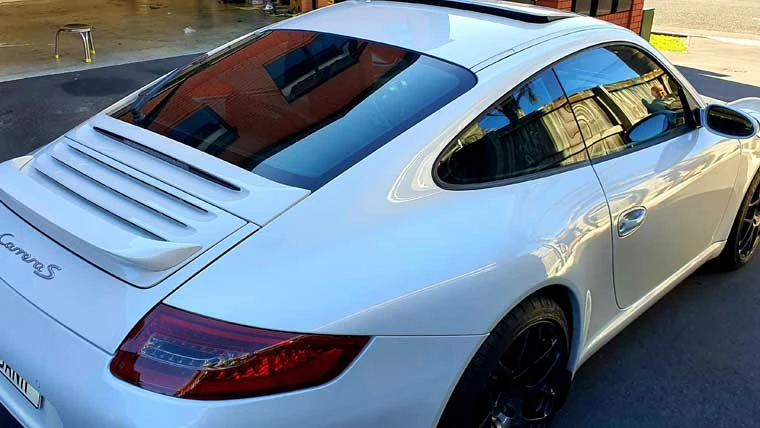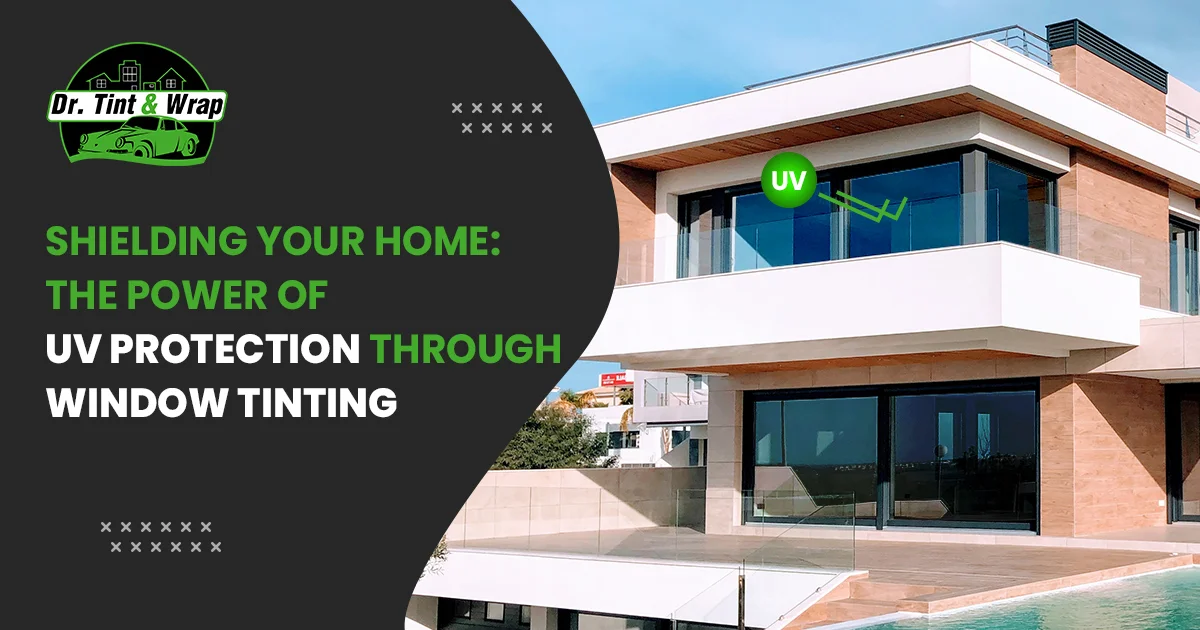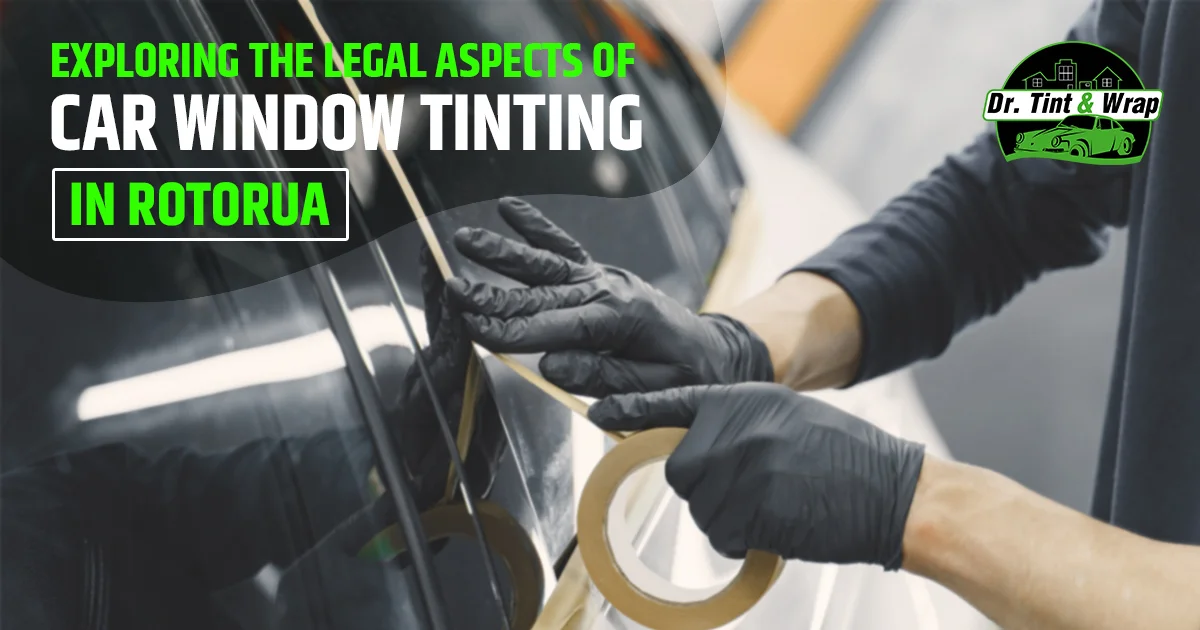
Why tinting your window is also good for your skin’s health?
18 Oct 2020, By AdminA car’s window tint gives it a stylish and sleep exterior. The moment you see a car with tinted windows, you immediately are allured to its charm and wonder who would be driving the fancy car. Window tinting simply doesn’t give a car a stylish look but also has many benefits. In case of an accident, a tinted window will not shatter as easily, it protects the car from being overheated and from the harmful UV rays, and it obscures the view inside the car which can help protect your identity and also protect your valuables in the car from strangers. Along with that, a tinted window helps keep the life of your leather seats last longer.
An important benefit of window tinting is how it protects your car from the heat and the rays of the sun. Along with helping the car from being overheated, what a quality window tint does is that it creates a barrier between you and the harmful rays of the sun. A continuous strong exposure to harsh sunrays can create issues for the eyes. The eyes can get fatigued with the sun’s exposure. And harmful rays of which is known to lead to cataract. The ultraviolet rays are known to be hazardous to health. While they can cause the skin to discolor, or age faster, a continuous exposure to these rays can also lead to skin cancer or other skin diseases.
Along with your skin, a car’s window tint can also help you take care of yourself in better ways. By not letting the car overheat, it is easier to regulate the body’s temperature and keep it normal and hence avoid overheating. This will also help in cutting down the usage of the air-conditioning which in turn will help save you more money to begin with.
It is then not only important to have a good quality window tint just for the feel of a sleek looking car but also for your health.

Shielding Your Home: The Power of UV Protection Through Window Tinting
18 Oct 2020, By AdminIn the pursuit of creating a cozy and inviting home, we often invest in exquisite furniture, delicate fabrics, and beautiful artwork. However, while we bask in the warmth of sunlight filtering through our windows, we might unknowingly subject our prized possessions to potential harm. Ultraviolet (UV) rays, invisible but potent, can cause irreparable damage to our furniture, flooring, and other cherished items. Fortunately, there's a simple yet effective solution – window tinting. In this blog, we'll explore the significance of UV protection through window tinting and how it preserves the integrity of your home.
Understanding the Threat: UV Rays
UV rays, a component of natural sunlight, are notorious for their ability to fade and deteriorate materials over time. Wood, fabric, leather, and even artwork are vulnerable to the harmful effects of prolonged exposure. Traditional windows offer little defense, allowing these rays to penetrate and wreak havoc on your interiors. This is where window tinting steps in as a guardian, forming an invisible shield against these damaging rays.
The Role of Window Tinting: A Protective Barrier
- Preventing Fading: One of the primary benefits of window tinting is its capacity to reduce fading. Tinted windows block a significant portion of UV rays, ensuring that your furniture and flooring retain their vibrant colors and textures for a more extended period. Say goodbye to the washed-out hues and say hello to long-lasting elegance.
- Preserving Fabrics and Upholstery: Fabrics, especially those found in curtains, upholstery, and rugs, are highly susceptible to UV damage. Window tinting safeguards these textiles, prolonging their lifespan and maintaining their luxurious appeal. Your curtains will stay rich and your upholstery will remain plush, all thanks to the protective tint.
- Safeguarding Art and Valuables: Artwork and valuable items, such as antique furniture or delicate ornaments, deserve special care. Window tinting acts as a shield, allowing you to display your treasures without fear of deterioration. Your art collection will stay vivid, and your valuables will maintain their allure, enhancing your home's aesthetics for years to come.
The Added Benefits: Beyond UV Protection
- Energy Efficiency: Window tinting not only protects against UV rays but also improves your home's energy efficiency. By blocking excessive heat during summers and retaining warmth in winters, tinted windows contribute to a more comfortable living environment and reduced energy bills.
- Enhanced Privacy and Security: Tinted windows offer enhanced privacy, making it difficult for prying eyes to peer inside. Additionally, they reinforce your home security, acting as a deterrent against potential intruders.
Conclusion
A Brighter, Safer Tomorrow In the battle against the invisible menace of UV rays, window tinting emerges as a reliable ally. By investing in quality window films, you not only protect your furniture, flooring, and cherished possessions but also create a more energy-efficient, secure, and private home. Embrace the transformative power of window tinting, and let your home shine brightly while staying shielded from harm. Remember, a small step today can lead to a brighter, safer tomorrow for your home and everything within it.

Window Tinting Trends and Styles: Whats Popular in Hamilton
18 Oct 2020, By AdminWindow tinting has become increasingly popular among homeowners and car enthusiasts alike in Hamilton. Not only does it enhance privacy and protect against harmful UV rays, but it also adds an aesthetic appeal to any property or vehicle. As window tinting continues to evolve, new trends and styles emerge, offering an array of options for Hamilton residents. In this blog, we'll explore the latest window tinting trends and styles that are currently popular in Hamilton.
Ceramic Window Tinting: Ceramic window tinting has gained significant popularity in Hamilton due to its superior heat rejection properties. This advanced technology utilizes ceramic nanoparticles that effectively block out infrared heat while allowing visible light to pass through. The result is a cooler interior, reduced glare, and improved energy efficiency. With its exceptional performance and sleek appearance, ceramic window tinting has become a top choice for both residential and automotive applications in Hamilton.
Privacy and Security Films: In a bustling city like Hamilton, privacy and security are essential considerations for many homeowners and businesses. Privacy and security films provide an effective solution by obscuring the view from the outside while allowing those inside to maintain a clear view. These films come in various designs and opacities, enabling residents to choose the level of privacy they desire. Additionally, security films offer an added layer of protection against break-ins, as they reinforce the glass and make it more difficult to penetrate.
Decorative Window Films: Decorative window films have become a creative way to add style and personality to windows in both residential and commercial spaces. These films come in a wide range of patterns, textures, and colors, allowing for endless customization options. Whether it's a frosted design for privacy in a bathroom or an elegant etched pattern for a storefront, decorative window films can transform plain glass into a visually stunning feature.
Dual-Reflective Window Tinting: Dual-reflective window tinting is another popular choice in Hamilton, offering a balance between privacy and clarity. These films have a reflective exterior surface that provides excellent daytime privacy, while the interior surface remains less reflective, allowing occupants to maintain visibility. Dual-reflective window tinting also provides heat and UV rejection, making it an ideal option for those seeking a versatile solution.
Color-Shifting Window Tints: For automotive enthusiasts in Hamilton, color-shifting window tints have become a captivating trend. These films feature a unique iridescent effect that changes color depending on the viewing angle and lighting conditions. Color-shifting tints not only enhance the appearance of vehicles but also offer privacy and heat-rejection properties. They provide a distinctive and eye- catching look that sets cars apart from the crowd. Window tinting trends and styles in Hamilton have evolved to meet the diverse needs and preferences of residents. From ceramic window tinting for superior heat rejection to decorative films for added style, there is an option to suit every taste and requirement. Whether you're looking to enhance privacy, improve energy efficiency, or simply add a touch of sophistication to your property or vehicle, window tinting offers a multitude of benefits. Dr. Tint & Wrap is a reputable company specializing in professional Window Tinting services in Hamilton. With their expertise and attention to detail, they offer top-notch solutions that enhance privacy, reduce glare, and protect against harmful UV rays, ensuring customer satisfaction.

Exploring the Legal Aspects of Car Window Tinting in Rotorua
18 Oct 2020, By AdminWhen you roam the scenic streets of Rotorua, New Zealand, you'll notice many vehicles flaunting sleek window tints that not only add an air of mystery but also provide practical benefits. Car window tinting has become a popular choice for many motorists, offering privacy, reducing glare, and protecting the vehicle's interior from harmful UV rays. However, as appealing as window tinting may be, there are legal considerations that every car owner in Rotorua must be aware of before opting for this modification.
The Trend and its Advantages
Car window tinting has been trending in Rotorua for the past few years. It's no wonder why so many car enthusiasts choose to tint their windows. The advantages are numerous:
- Privacy: Tinted windows give car occupants a sense of seclusion, making it difficult for prying eyes to see inside the vehicle.
- Solar Protection: The harsh New Zealand sun can be damaging to both the passengers and the vehicle's interior. Window tints act as a shield against harmful UV rays, reducing the risk of skin cancer and preserving the car's upholstery.
- Improved Aesthetics: Let's face it; window tints lend an air of sophistication to any vehicle. They provide a uniform appearance, enhancing the overall aesthetics of the car.
- Reduced Glare: Glare from the sun and other vehicles can be a real hazard, causing visual discomfort and increasing the likelihood of accidents. Tints mitigate this problem by minimizing glare, leading to safer driving conditions.
Understanding the Law in Rotorua
While car window tinting offers various benefits, New Zealand has strict laws in place to regulate its usage. These laws are designed to ensure public safety and law enforcement's ability to monitor vehicles. Rotorua adheres to the national guidelines set forth by the New Zealand Transport Agency (NZTA) regarding permissible limits for window tinting.
According to NZTA regulations, the following rules apply to car window tinting in Rotorua
- Visible Light Transmission (VLT): The VLT refers to the percentage of light that must pass through both the front and rear side windows and windscreen. In Rotorua, the front side windows must have a minimum VLT of 35%, while there are no restrictions on the rear side windows and the rear windscreen. This means that at least 35% of light must pass through the front side windows.
- Restricted Colors and Reflectivity: The use of highly reflective or mirrored tints is prohibited, as they can be distracting to other drivers and interfere with road safety. Additionally, the colour of the window tint should be within the range of green, grey, and neutral smoke.
- Windscreens: The tint on the windscreen must be limited to the top 100mm, ensuring an unobstructed view for the driver.
- Inspection Certification: If you're considering tinting your car windows, ensure that the tint complies with NZTA regulations. If you're purchasing a car with pre-installed tints, check if the vehicle comes with an inspection certification stating that the tints meet the legal requirements.
Consequences of Non-Compliance
Failing to adhere to the car window tinting laws in Rotorua can have serious consequences. If you're caught with illegal window tints, you may face fines, demerit points on your driver's license, and potentially have to remove the tints to comply with the law.
Car window tinting is undeniably an attractive and practical option for car owners in Rotorua. It not only enhances the aesthetics of the vehicle but also provides various benefits like privacy and solar protection. However, it's crucial to remember that there are legal restrictions in place to ensure road safety and visibility for all motorists. Dr. Tint & Wrap Rotorua stands out as the premier destination for top-notch car window tinting services, offering unmatched expertise and quality. As a responsible business, they prioritize adhering to all government regulations to ensure a safe and compliant tinting experience for their customers.
